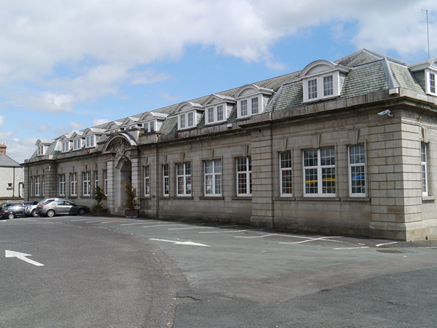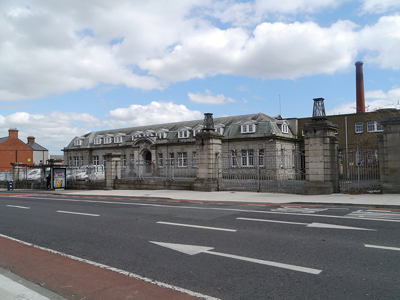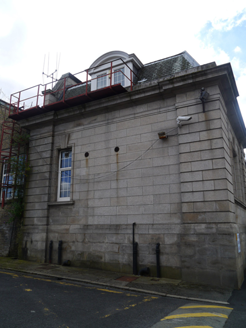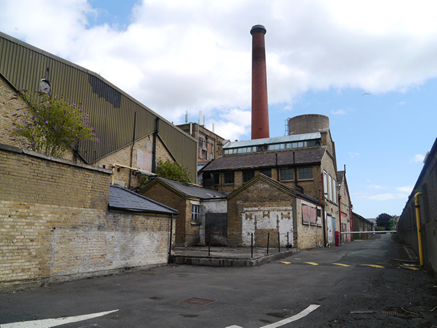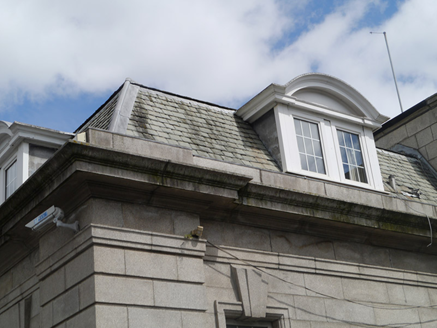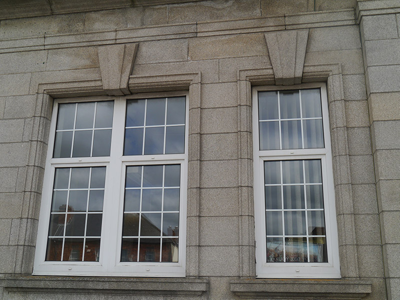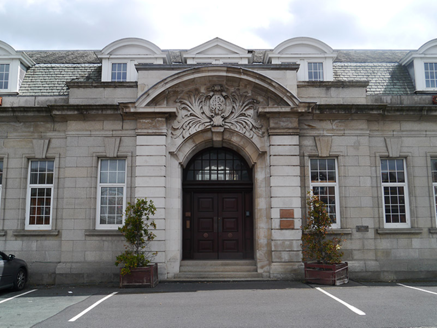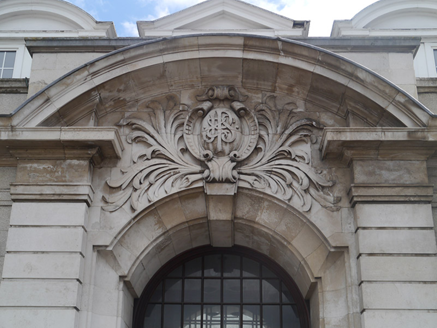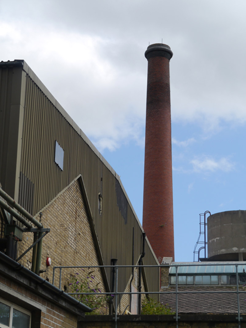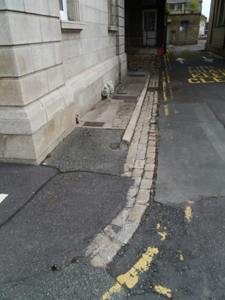Survey Data
Reg No
50130163
Rating
Regional
Categories of Special Interest
Architectural, Artistic, Technical
Previous Name
John Player & Sons
Original Use
Factory
Date
1920 - 1925
Coordinates
315308, 236685
Date Recorded
02/07/2018
Date Updated
--/--/--
Description
Attached multiple-bay single-storey neo-Classical former tobacco factory administration block, built 1923. with dormer attic. Now vacant. Symmetrical front and end facades, principal facade having shallow breakfront with pedimented entrance, and end bays projecting forwards; substantial industrial blocks attached to rear. Mansard Westmoreland slate roof behind granite blocking course, stepped to centre over entrance bay; leaded hips and timber dormers with slated cheeks and having segmental-profile roofs to end bays and to flanking bays of three-bay units to recessed part of facade, with gabled roofs to middle dormers. Cast-iron downpipes. Ashlar granite walling over plinth with plain frieze and moulded cornice, projecting piers to corners having shallow band-rustication; Portland stone to entrance bay. Square-headed windows with moulded architraves and stepped keystones, projecting moulded granite sills and replacement uPVC windows. Shouldered segmental-headed entrance opening, flanked by band-rusticated Portland stone piers supporting open-bed segmental pediment having carved fronds, keystone and cartouche bearing monogram JPS to tympanum; recessed double-leaf stained timber door, each leaf having three raised and fielded panels and side panels and multiple-pane overlight. Tapered industrial chimney located to southeast, built of red brick laid in English garden wall bond and having corbelled neck and nosed lip of engineering brick. carpark to front of building; site bounded by original boundary walls and railings.
Appraisal
The administrative block of the former John Player & Sons tobacco factory is a prominent and attractive building in the Glasnevin area, built to designs by the English architectural practice of Hepworth & Rayson and later extended by Ashworth & Smith. It is composed on an assured symmetrical layout in a neo-Classical style that is highly representative of the period, in a palette of granite, Portland stone and Westmoreland slate. Although currently vacant, the building is retained largely intact, although original windows have been lost. It is enhanced by the survival of original boundary features and the iconic red brick chimney at the southeast, which has landmark status in the area. John Player & Sons was established in Nottingham in 1877 when Player purchased the successful tobacco factory of William Wright (established in 1820) and expanded it to become one of the most recognized tobacco brands and one of the first to supply pre-packaged tobacco. As a major employer, the complex makes a strong contribution to the architectural and social history of the north Dublin suburbs.
